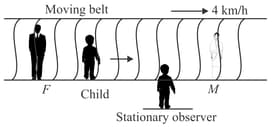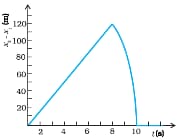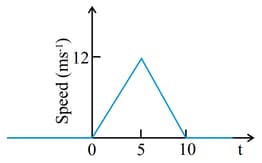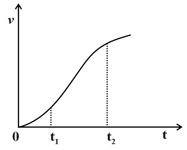A boy standing on a stationary lift (open from above) throws a ball upwards with the maximum initial speed he can, equal to . How much time does the ball take to return to his hands? If the lift starts moving up with a uniform speed of and the boy again throws the ball up with the maximum speed he can, how long does the ball take to return to his hands?

Important Questions on Motion in a Straight Line
On a long horizontally moving belt (Figure), a child runs to and fro with a speed (with respect to the belt) between his father and mother located apart on the moving belt. The belt moves with a speed of . For an observer on a stationary platform outside, what is the
(a) speed of the child running in the direction of motion of the belt ?
(b) speed of the child running opposite to the direction of motion of the belt ?
(c) time taken by the child in (a)and (b)?
Which of the answers alter if motion is viewed by one of the parents?


The speed-time graph of a particle moving along a fixed direction is shown in Figure. Obtain the distance traversed by the particle between
(a) to
(b) to

What is the average speed of the particle over the intervals in (a) and (b)?
The velocity-time graph of a particle in one-dimensional motion is shown in Figure.

Which of the following formulae are correct for describing the motion of the particle over the time-interval to ?
